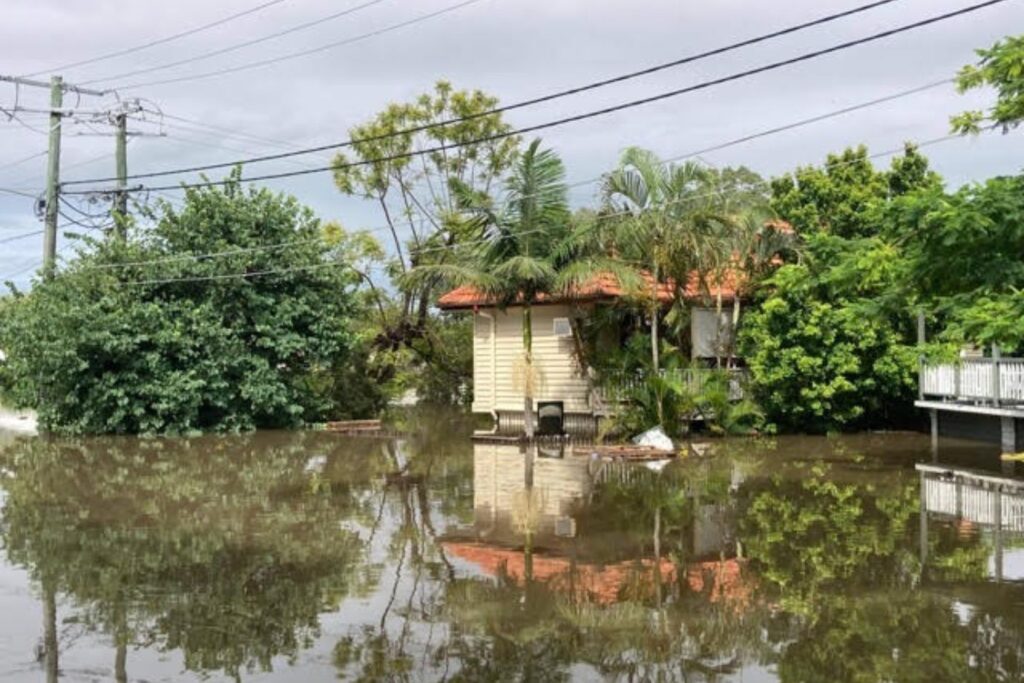In 2011, our family home in Chelmer went under flood waters. I remember packing a carload of valuables and driving away to safety, not knowing the devastation we would return to once the flood waters receded. After the huge clean up and renovation, we always had a lingering sense of unease about our home, knowing it could happen again – a visceral feeling of not being safe. Just over a decade later, it happened again.
New analysis out last week shows that homes in flood-prone areas across Australia have collectively lost $42 billion in value over the past 20 years. This is the first-of-its-kind data showing that homeowners are effectively paying a disaster penalty because pollution from coal, oil, and gas is overheating our planet and supercharging extreme weather events like flooding rains and storms. Those living in Queensland and NSW are the hardest hit by loss of value due to flood risk — but climate change is affecting all Australians.
Don’t think about $42 billion as a number on a spreadsheet. It represents the life savings, superannuation, and stability of ordinary Australians — parents, teachers, nurses, small business owners — who have done everything right and are still losing out.
When the floodwaters rose the second time, so did the heartbreak. The smell of decay, the sight of ruined furniture, the endless phone calls to insurance companies — it all came rushing back. We knew we couldn’t live through it again. We sold our home for less than it was worth, simply because it had become too risky to stay.
We lost not only equity but also our sanctuary, sense of security, and stability.
When disasters hit, the invisible load is real. After making sure everyone is accounted for, there’s managing evacuation plans, sorting through ruined possessions, finding new rentals, comforting children, and juggling the mountain of paperwork that follows. The emotional labour is immense — and rarely acknowledged.
We need to maintain momentum on climate action, otherwise, families like mine will continue to foot the bill — not just emotionally, but financially. Every disaster chips away at our homes, our equity, and our futures.
It’s easy to talk about “property markets” and “economic impacts,” but behind those terms are real people living through relentless cycles of loss and recovery. Many are now uninsurable, unable to rebuild, and unsure where to go next.
The Albanese government must do more to protect families like mine. That means cutting pollution faster. Policy changes that actually protect our climate, like strengthening our national environment laws, investing in flood-resilient housing, and supporting communities before, during and after disasters. It means ensuring insurance remains accessible and affordable, and that governments have a real plan for the growing number of Australians facing climate-driven displacement.
Communities like mine are on the frontline of the climate crisis, but too often, our voices are missing from the decision-making rooms. My story shouldn’t be a warning — it should be a turning point. Because no one should have to lose their home — twice — before governments finally act.


